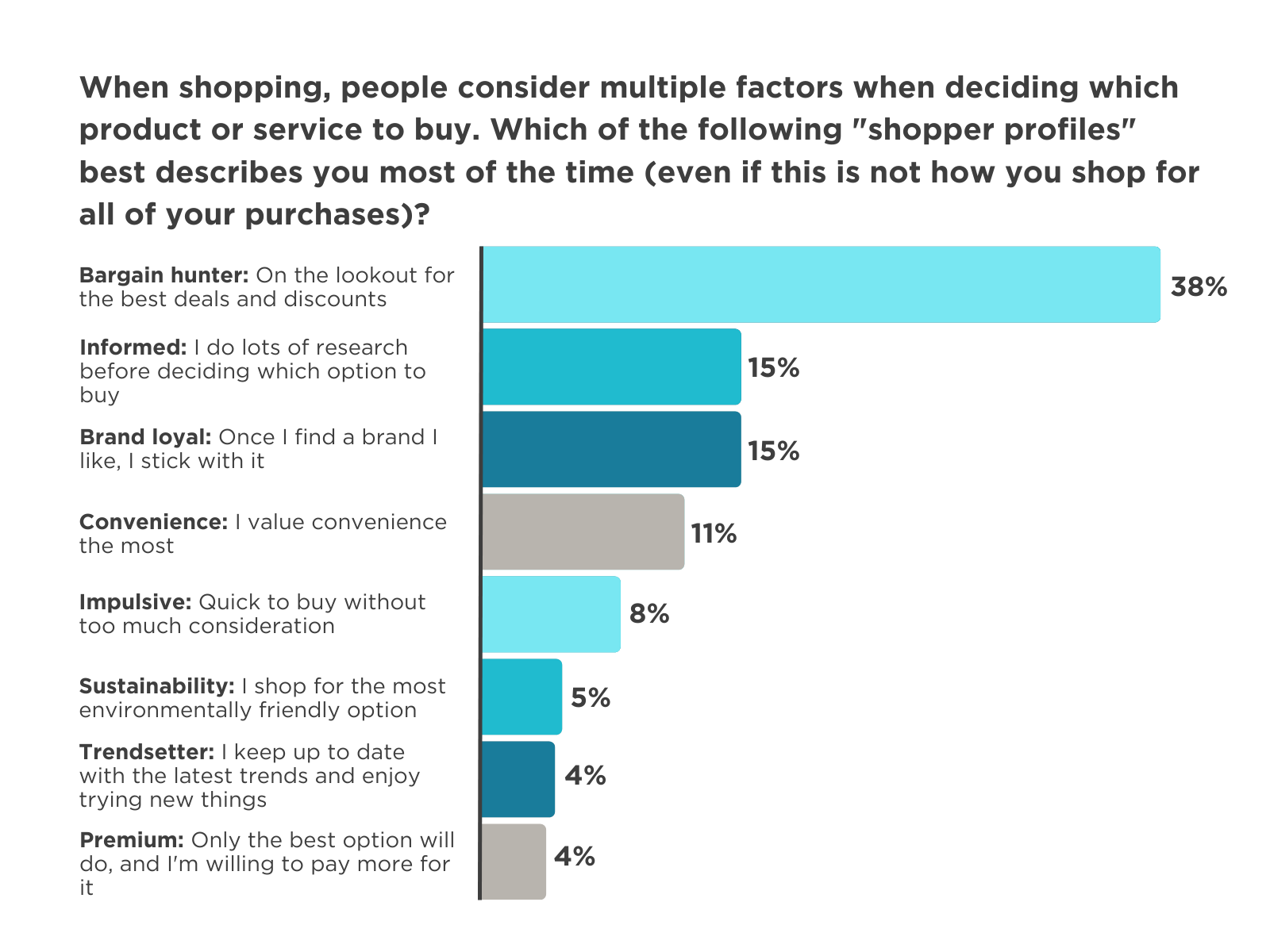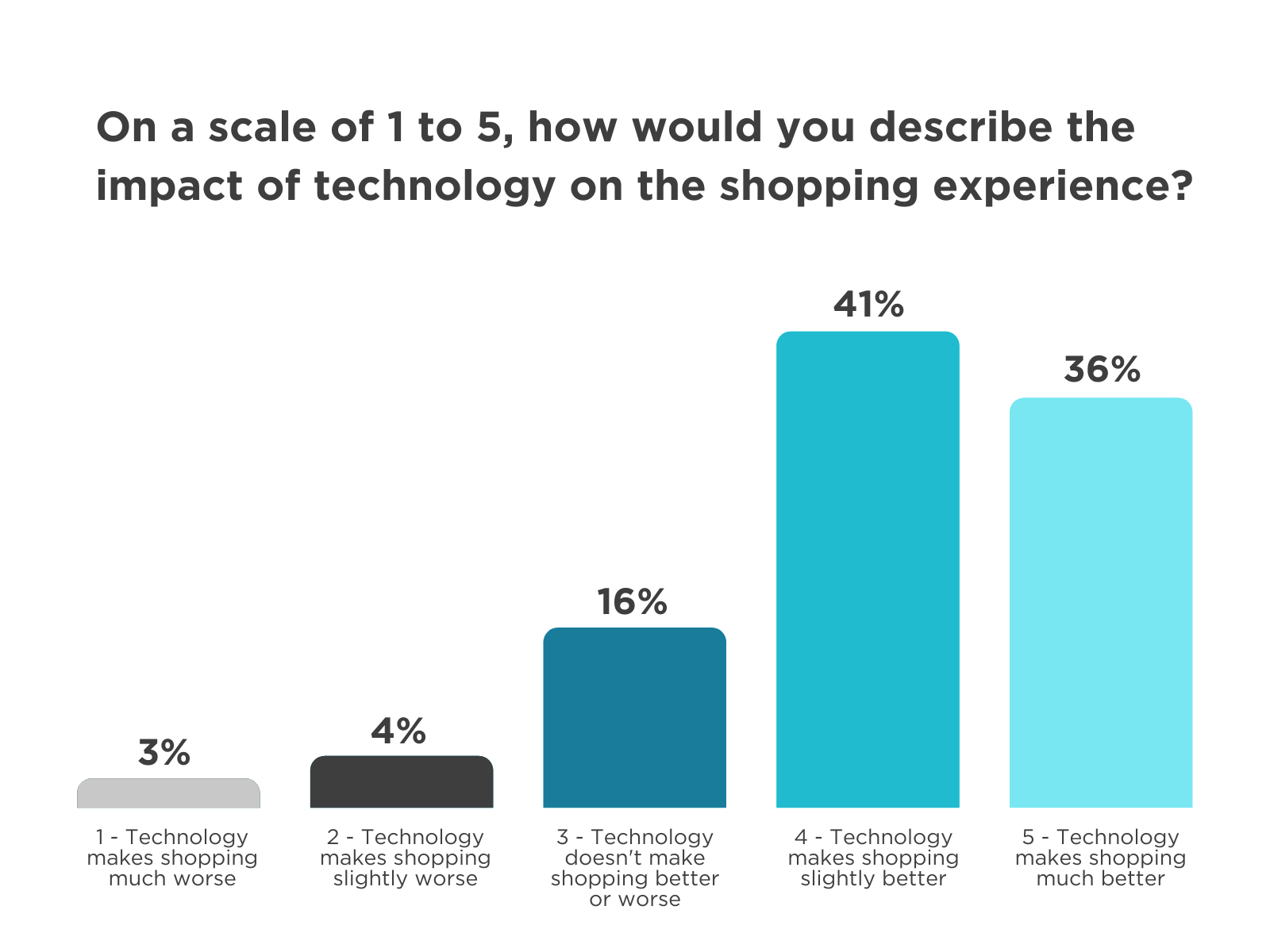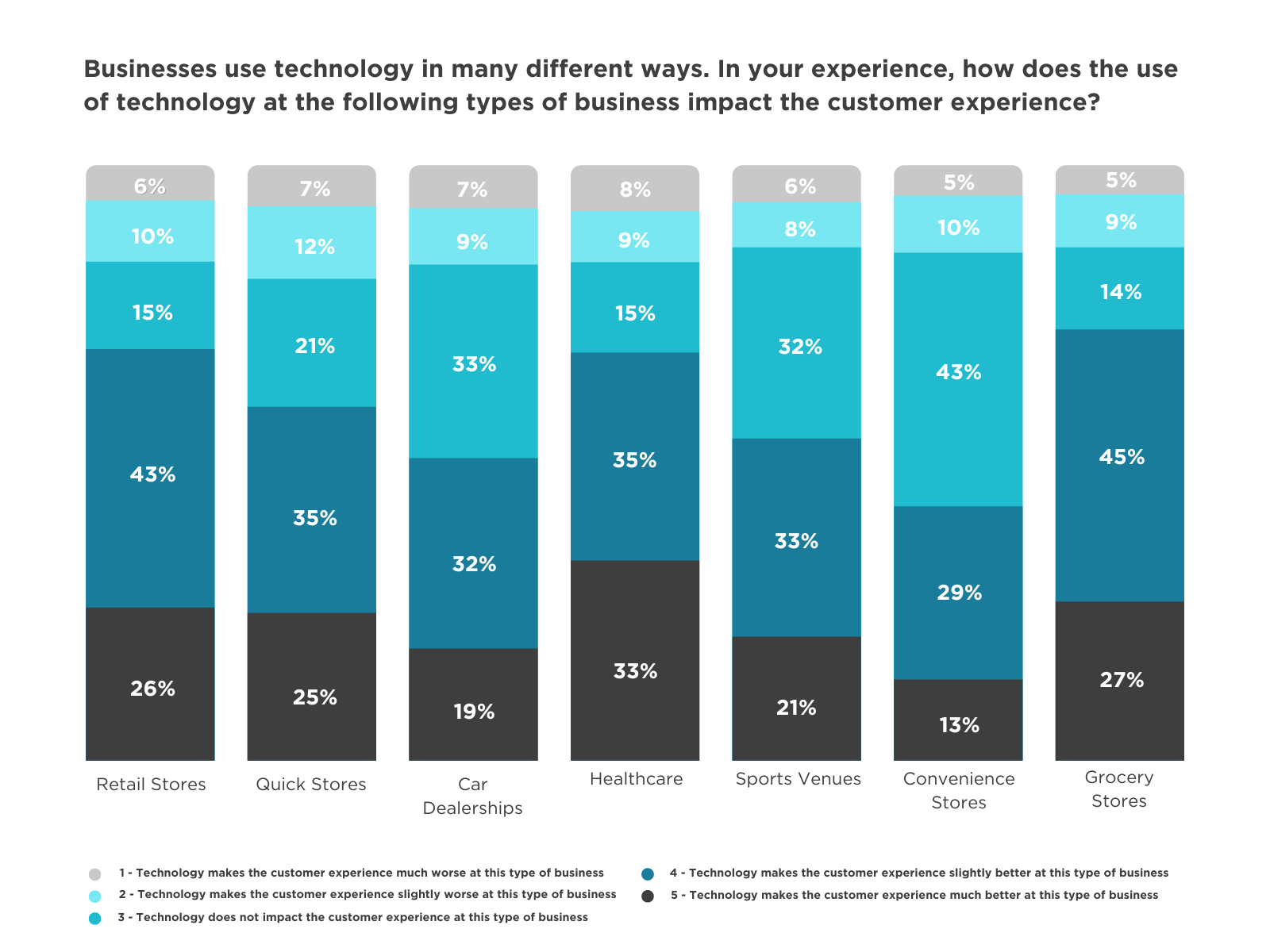The Gen Z store prioritizes technology for a modern experience
A new study finds that young shoppers are leading the push away from the traditionally sought-after qualities of convenient location, clean and comfortable stores, and friendly employees.
SUMMARY:
Purpose of this Study
Gen Z is the first generation to have never known a life without immediate access to the internet. This plugged-in demographic has increasingly become top of mind for many brands as it represents a growing pool of independent consumers who, for the first time, are making their own shopping decisions. While recent research confirms younger shoppers still want to shop in person, the team at Creative Realities wanted to better understand the role technology played in that modern shopping experience. What we found were some notable generational differences in shopper preferences that indicate an emerging shift in what that in-store experience could look like.
We weren’t surprised to learn that Gen Z is the generation most likely to seek technology-enabled, self-service solutions compared to other consumers; they’ve been telling us this. What was surprising was how much more they seemed to prioritize these things over more traditionally expressed shopping preferences. For example, Gen Z is significantly less demanding of the traditionally sought-after brick-and-mortar shopper experiences, like an organized and neat store or a convenient location.
- A full half (50%) of their parent’s generation, Gen X, expressed that a pleasant physical environment is a must-have for a positive shopping experience.
- In comparison, roughly only one in four (29%) of younger pollsters (Gen Z) expressed a strong preference for a well-organized physical store as a must-have part of a positive shopping experience.
- A third of Gen Z shoppers said self-checkout technology was a must-have part of the modern shopping experience, compared to just 16% of Gen X shoppers saying the same thing.
- That was also true for self-serve kiosks, with twice as many Gen Z shoppers (13%) saying they were something they had to have as Gen X shoppers (7%).
That’s the importance of technology doubling in the space of just two generations, indicating that businesses still on the fence about further integrating these kinds of technologies into the shopping experience are in danger of being left behind.
“We’ve had an anecdotal awareness of the generational differences present in shopper preferences, but this survey puts that reality into hard numbers,” said Beth Warren, Creative Realities’ senior vice president of marketing. “Younger shoppers are compelled more by convenience and autonomy, whereas their older counterparts still place a high value on various contextual elements, things like pleasant human interactions with knowledgeable employees and well-designed store layouts. That doesn’t mean younger shoppers don’t want those things, but it was surprising where they fell on their list of priorities.”
Working with the third-party survey platform Pollfish, we asked 1,000 U.S. adults in May 2023 to share insights regarding their preferred consumer experiences across several categories. Here are the results of our modern shopping experience survey.
KEY FINDINGS:
- Respondents are generally positive about the overall impact of technology on the shopping experience. More than 75% feel that technology makes shopping better, but there is some variance between the types of shoppers.
- While clean stores, friendly employees, low prices, and a convenient location continue to be important factors in why someone picks where they shop, the modern shopping experience is becoming more technology-driven for all shoppers.
- How people feel technology impacts their shopping experience depends on where they are shopping.
Respondents are generally positive about the overall impact of technology on the in-store shopping experience. More than 75% feel that technology makes shopping better.
Broadly, respondents considered technology a net positive on the shopping experience, with 75% saying that it made it better. But when we looked at them by shopper type, we saw some interesting variations.
We asked the people we surveyed to identify themselves according to a number of shopper categories: bargain hunters, informed shoppers (those who research items before purchasing), impulse shoppers, convenience shoppers, and sustainability shoppers.
Some groups are more enthusiastic about the impact of technology than others.
- 67% of Convenience-minded shoppers say technology makes shopping better compared to 80% of bargain hunters who feel the same. It is worth noting that 3.4x as many shoppers identified themselves as bargain hunters as compared to convenience-focused shoppers.
People who said they were Informed shoppers are the most positive about technology, with 84% saying it makes the shopping experience better.


While clean stores, friendly employees, low prices, and a convenient location continue to be important factors in why someone picks where they shop, the modern shopping experience is becoming more technology-driven for all shoppers.
While the survey revealed some marked generational differences in shopper preferences, it also showed that most consumers—regardless of age—consider technology to be a positive element in their shopping experiences when it is suited to the context.
When shoppers were asked to rank what they considered their “must haves” in a shopping experience vs. their “nice to haves,” most still said that things like low price and convenience were things they could not do without. But for stores looking to set themselves apart from the competition, many technology-driven qualities made the “nice to have” list.
This means that even though technology isn’t a driver now in many shoppers’ decisions about where to shop, it can be a differentiator for the companies that are already providing those classic ‘must-haves.”

How people feel technology impacts their shopping experience depends on where they are shopping.
While the survey revealed a majority vote “for” technology, we found that what makes a form of technology desirable in a consumer experience varies among industries.
An overwhelming number of people say that in a retail shopping experience technology makes it better. Even more of them say that the grocery shopping experience is improved by technology. But those same shoppers also said that technology does not improve the shopping experience in a convenience store.
This shows us that shopper preferences regarding the presence of technology in their shopping journeys vary not only depending on their age but also in terms of industry and intended purpose.
“U.S. shoppers are undeniably receptive to the presence of technology in their shopping journey,” states Warren. “However, what truly makes them enthusiastic about technology is when it seamlessly melds into their shopping experience. U.S. consumers want technology to enhance and support their shopping experiences without being intrusive or confusing. Companies who start implementing technology into the shopping experience now can differentiate themselves to attract the younger consumers who are expecting a modern, technology-assisted shopping experience as well as satisfy those other shoppers who are looking for the same thing.”

Share this
You May Also Like
These Related Stories

Exploring the Generation Gap: How Gen Z's Inquisitiveness Shapes Retail Strategies

How Gen Z Values are Shaping How We Live, Shop, and Consume

